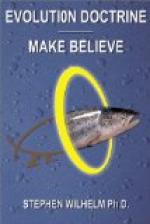Palaeontology searches everywhere among the deposits of earlier ages for links to be fitted into their proper sequence of time, from which it constructs the chain of diverse types leading down to the species of the present. A cat of to-day is therefore viewed in an entirely different connection, as the last term in a consecutive series of species. Forming alliances with geology, and even with physics and chemistry, this department of zooelogy endeavors to reconstruct the past from what it learns to-day about organisms and the conditions under which they live. Finally the observations that cats of various kinds do not occur everywhere in the world, but only in certain more or less restricted localities, belong to the subject of geographical distribution, and illustrate its nature.
Our task is to learn the teachings of these several divisions by recalling and putting together what we know already about the commonest animals, or noting what can be observed in a visit to a zooelogical garden and aquarium. On account of the present limitations of time, the subject of classification will be combined with comparative anatomy; embryology will be taken up together with these subjects; palaeontology will be the main subject of the next discussion, which will include also a brief statement of the meaning of distribution. Then we will be prepared to study nature to see how evolution works.
II
THE STRUCTURE AND DEVELOPMENT OF ANIMALS AS EVIDENCE OF EVOLUTION




